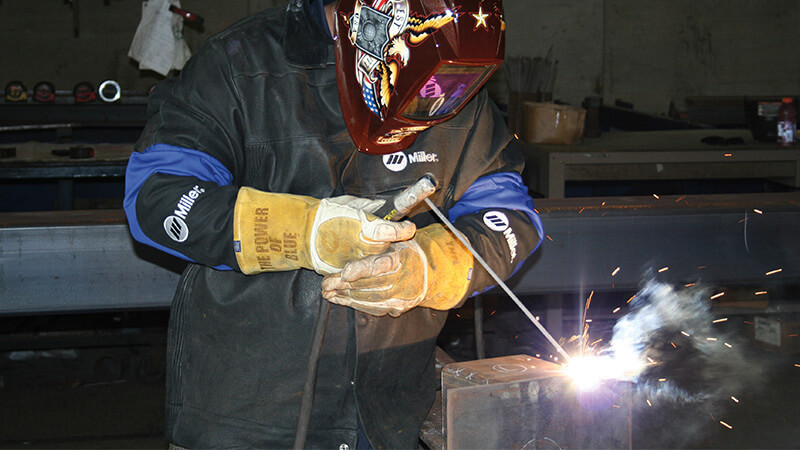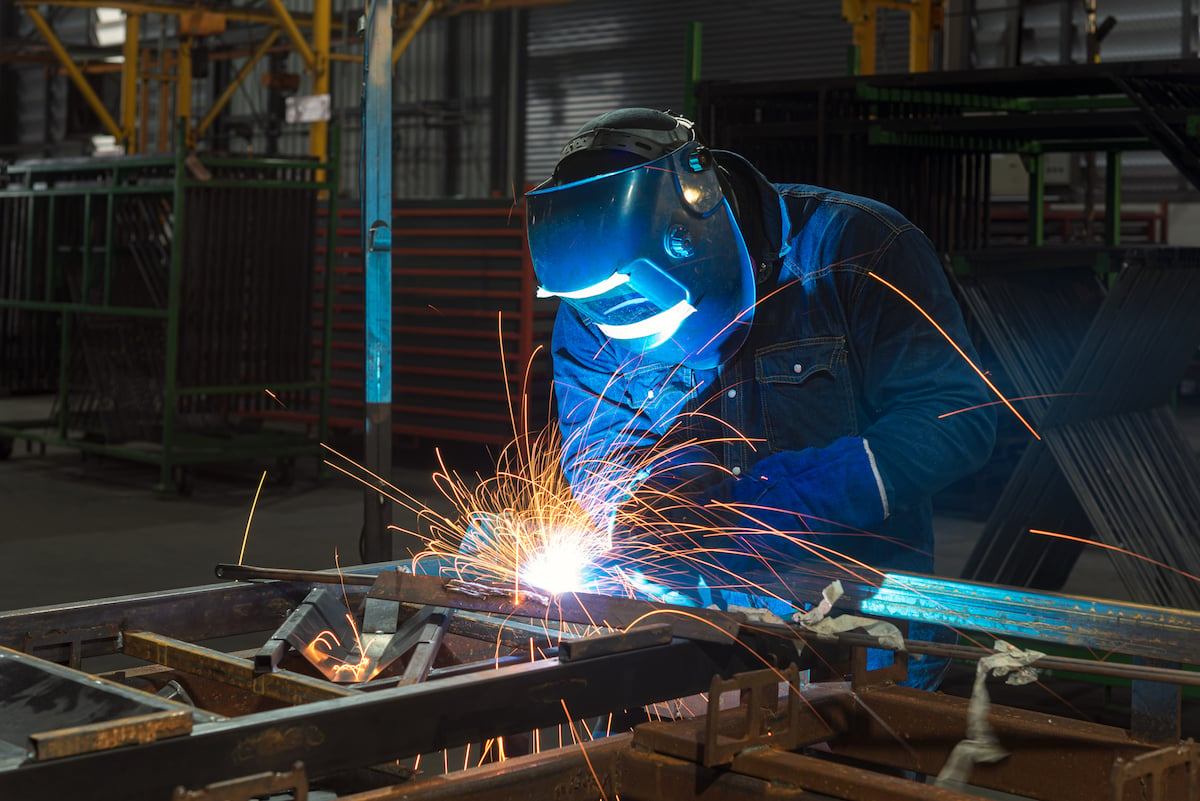Belgrade Fabrication’s essential steps for dealing with incomplete fusion
Wiki Article
Common Welding Fixing Issues and How to Address Them Effectively
Welding repair services often experience a variety of problems that can threaten the honesty of the end product. Typical troubles consist of poor penetration, porosity, and misalignment, to name a few. Each issue presents distinct difficulties that require particular techniques for resolution. Comprehending these concerns is essential for welders intending to enhance their abilities and end results. This conversation will explore these common welding repair service problems and efficient approaches to address them.Poor Penetration
Inadequate infiltration takes place when the weld metal falls short to fully fuse with the base material, causing weak joints and prospective structural failings. This issue usually originates from not enough warm input, incorrect electrode angle, or incorrect welding rate. Welders may experience insufficient infiltration as a result of a miscalculation of the necessary criteria for a certain material thickness or type. In addition, contamination on the base product's surface area can impede reliable bonding, worsening the problem. To deal with insufficient penetration, welders should guarantee suitable settings on their devices and keep a tidy job surface area. Routine assessment of welds is suggested to identify any shortages early, permitting timely modifications and the avoidance of jeopardized structural integrity in bonded settings up.Porosity
Porosity is a typical problem in bonded joints that manifests as tiny gas bubbles trapped within the weld metal. This issue can compromise the stability of the weld, leading to minimized stamina and prospective failure under anxiety. Montana Mobile Welding and Repair Welding. Porosity normally occurs from contamination, wetness, or inappropriate welding strategies, which permit gases to get away into the liquified weld pool. To deal with porosity, welders need to ensure proper surface area preparation, maintain a tidy working setting, and make use of ideal welding specifications. In addition, choosing the ideal filler product and shielding gas can reduce gas entrapment. Routine evaluation and screening of welds can aid identify porosity early, guaranteeing prompt rehabilitative actions are taken, therefore maintaining the quality and dependability of the bonded frameworkImbalance
Imbalance in welding can develop from different aspects, including incorrect arrangement and thermal growth. Understanding the source is crucial for reliable resolution. Several modification methods are available to straighten components and guarantee structural honesty.Reasons of Misalignment
Welding misalignment frequently comes from a range of underlying concerns that can endanger architectural honesty. One main cause is improper fit-up of components prior to welding, which can bring about gaps and unequal surface areas. Variants in thermal expansion during the welding procedure can likewise result in distortion, especially if the materials being joined have different coefficients of development. Additionally, inadequate securing and fixturing may fail to hold components firmly in position, causing motion throughout welding. Improperly kept tools, including welding machines and tools, may present inconsistencies in the weld bead, more contributing to misalignment. Finally, driver error, stemming from inadequate training or experience, can likewise play a substantial role in developing misaligned welds.Improvement Strategies Available
Resolving misalignment successfully needs a mix of corrective strategies tailored to the details issues available. One common approach is using components or jigs to hold parts in the appropriate setting throughout welding, guaranteeing regular positioning. Furthermore, preheating the materials can help minimize distortion and improve fit-up. For significant misalignment, mechanical adjustment techniques, such as making use of hydraulic jacks or clamps, can be utilized to deal with the setting before welding. Post-weld warm treatment might also be essential to relieve tensions brought on by misalignment. Finally, cautious examination and adjustment during the setup phase can prevent imbalance issues from becoming significant troubles, advertising a smoother welding process and enhancing overall structural honesty.Distortion
Distortion is an usual difficulty in welding that can emerge from different aspects, including irregular cooling and heating. Recognizing the sources of distortion is important for applying effective prevention techniques. Resolving this problem not only enhances architectural integrity but also improves the general high quality of the weld.Sources of Distortion
When subjected to the intense warm of welding, materials usually undergo modifications that can lead to distortion. This phenomenon mainly emerges from thermal development and contraction throughout the welding process. As the weld location warms up, the product broadens; upon air conditioning, it gets, which can produce interior tensions. On top of that, irregular home heating across a work surface can intensify these stress and anxieties, causing bending or flexing. The kind of product also plays a significant function; metals with differing thermal conductivity and coefficients of expansion might react in different ways, causing uncertain distortions. Poor joint style and poor fixturing can add to imbalance throughout welding, increasing the possibility of distortion. Comprehending these reasons is important for effective welding repair service and prevention approaches.Prevention Techniques
Effective avoidance techniques for distortion throughout welding concentrate on managing warmth input and making certain appropriate joint layout. Preserving a consistent heat input aids to minimize thermal development and look here tightening, which can bring about distortion. Using methods such as preheating the workpiece can likewise decrease the temperature slope, advertising uniform heating. In addition, selecting suitable joint styles, such as T-joints or lap joints, can enhance stability and reduce tension focus. Implementing appropriate fixturing to protect the work surfaces in place better aids in keeping positioning during the welding procedure. Finally, staggered welding sequences can disperse warm extra equally, preventing local distortion. By using these methods, welders can significantly lower the possibility of distortion and improve the overall quality of their welds.Splitting
Fracturing is an usual problem encountered in welding repair services, frequently resulting from numerous aspects such as inappropriate air conditioning prices, product selection, or inadequate joint preparation. The occurrence of fractures can substantially compromise the stability of the weld, resulting in possible failures during operation. To resolve this problem, welders must initially analyze the origin, making sure that materials work and appropriately chosen for the details application. Furthermore, managing the cooling price during the welding process is essential; rapid cooling can generate tension and lead to cracking. Proper joint style and preparation also add to lessening the risk. Carrying out these approaches can improve weld quality and durability, eventually reducing the likelihood of fracturing in finished weldments.
Incomplete Fusion
A considerable issue in welding repairs is insufficient combination, which happens when the weld metal does not sufficiently bond with the base product or previous weld passes - Belgrade Fabrication. This defect can lead to weaknesses in the joint, possibly endangering the stability of the bonded framework. Variables adding to incomplete fusion include inadequate warmth input, inappropriate welding method, and contamination of the surfaces being joined. To address this concern effectively, welders must guarantee proper pre-weld cleaning and surface area preparation, in addition to change their welding specifications to attain adequate infiltration and blend. Normal inspection during the welding process can likewise assist recognize insufficient blend early, permitting prompt corrective actions to enhance the overall quality of the weldOverheating
While welding fixings can boost structural stability, overheating provides a considerable challenge that can result in material deterioration. Too much warm during welding can change the mechanical buildings of metals, resulting in reduced toughness, raised brittleness, and warping. This sensation is especially vital in high-stress applications where structural dependability is paramount. Identifying overheating can involve aesthetic inspections for discoloration or distortion, along with keeping track of temperature throughout the welding procedure. To minimize the risks connected with overheating, welders must use ideal methods, such as managing warmth input, readjusting traveling rate, and utilizing suitable filler materials. Additionally, carrying out pre- and post-weld warmth therapies can help recover product residential properties and boost the overall quality of the fixing, making sure long-term efficiency and safety.Regularly Asked Questions
What Are the Usual Indicators of a Welding Problem?

How Can I Evaluate My Welds for Quality?
To evaluate welds for high quality, one can utilize visual assessments, ultrasonic screening, and radiographic methods. Each technique guarantees architectural integrity, determines issues, and confirms adherence to defined requirements, inevitably enhancing the dependability of welding and fabrication shops near me the welded joints.What Safety and security Safety Measures Should I Take While Welding?
When welding, one must focus on safety and security by using ideal personal protective equipment, making sure appropriate air flow, securing flammable products away, preserving a tidy work area, and being mindful of environments to avoid mishaps and injuries.Can I Fix a Weld Without Redoing the Entire Joint?
Repairing a weld without redesigning the entire joint is feasible, depending on the damage (Belgrade Welding). Methods such as grinding, including filler material, or using a welding process can efficiently address particular problems while maintaining the go to this website surrounding structureWhat Devices Are Necessary for Effective Welding Repairs?
Important devices for reliable welding repair services include a welding equipment, wire brush, mill, protective equipment, clamps, and filler products. Each tool plays an important function in ensuring high quality and safety throughout the repair work process. Porosity normally occurs from contamination, dampness, or incorrect welding strategies, which permit gases to escape into the molten weld swimming pool. Inadequately maintained tools, including welding equipments and tools, might introduce inconsistencies in the weld grain, more adding to imbalance. When subjected to the intense warmth of welding, materials frequently undertake modifications that can lead to distortion. Breaking is a typical concern encountered in welding repair services, usually resulting from numerous aspects such as inappropriate cooling prices, product choice, or inadequate joint preparation. A significant concern in welding repair work is insufficient combination, which happens when the weld metal does not adequately bond with the base material or previous weld passes.Report this wiki page